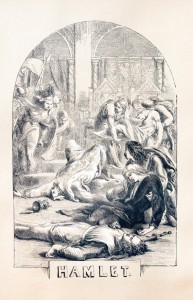Editor’s note: Reyn Kinzey is vice president of Kinzey and Day Market Research, Richmond, Va.
It’s pretty audacious to think about re-writing Shakespeare (although thousands of directors have done it), but I’d like to change one scene in Hamlet. When pompous old Polonius advises Laertes, “to thine own self be true…” I’d like to see Laertes interrupt and say, “Ah, but which self?”
Characters, like people, have many selves and it’s hard to imagine them all. Laertes seems a relatively straightforward character but that’s partially because he’s a foil (pardon the pun) for Hamlet, the most enigmatic of Shakespeare’s characters. Which is the real Hamlet, the brooding, philosophical stoic or the impulsive young man who offers to fight Laertes at Ophelia’s grave and “eat a crocodile” (yes – that is the line – Shakespeare wrote it, so it must be good)?
Critics have seen Hamlet as the first example of the modern character, divided against himself but for anyone who has experienced the play, Hamlet, although an impossible character to figure out, comes across as being very, very real. We read the play to attempt the impossible, to imagine – in the Elizabethan sense of the word – to figure out what makes this character do what he does.
And beyond all that, the holy grail of criticism, never on this earth to be realized, we read to imagine the character of Shakespeare, who smiles behind his myriad characters like the Cheshire cat.
Well, it’s not all that different from what we try to do in qualitative market research.
Like many market researchers I came to the game as a second career. In my previous life, I had been a college English teacher. When I started conducting focus groups, I found the analysis of the findings to be fairly similar to what I had done with literature: you start with what the characters (respondents) say and do in your groups. Sometimes what they say and think seems at odds with logic and reality but just as all works of art have their own coherence, so we as market researchers (or anthropologists) need to believe that all people have thoughts, values and beliefs that are internally consistent and therefore true for them. The trick is to figure out the consistency so that we can make business decisions.
I’ll admit, I’ve had some trouble convincing other moderators of the analogy between reading literature and reading consumers in focus groups but I’m now beginning to get some empirical support.
Last year NPR published an article Want to read other’s thoughts? Try reading literary fiction (Nell Greenfieldboyce, October 4, 2013). Greenfieldboyce summarizes a study in the journal Science that suggests our abilities to read the thoughts and feelings of others can be enhanced by reading serious literature:
“On average, people who read more literary books… did better on tests (to measure social perception) than people who read either nothing, read nonfiction or read best sellers.”
The article points out that it’s hard to precisely define what distinguishes literary fiction from best sellers but it points out that literary fiction focuses on the psychological and inner lives of characters more than best sellers do (not to say there isn’t plenty of action in literary fiction: count the bodies on stage at the end of Hamlet!).”
The article continues, “Readers have to watch what (characters) do and infer what they are thinking and feeling. This is the same process that we engage in when we try to guess other people’s thoughts and feeling and emotions, and to read their minds in everyday life.”
And, I would argue, this is what we engage in our everyday job as market researchers.
The moral of the story is “read a good book: it’ll make you a better researcher.”
